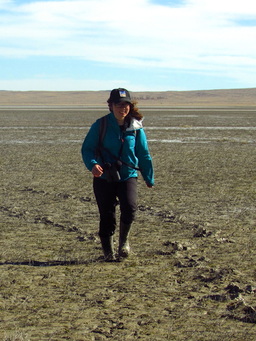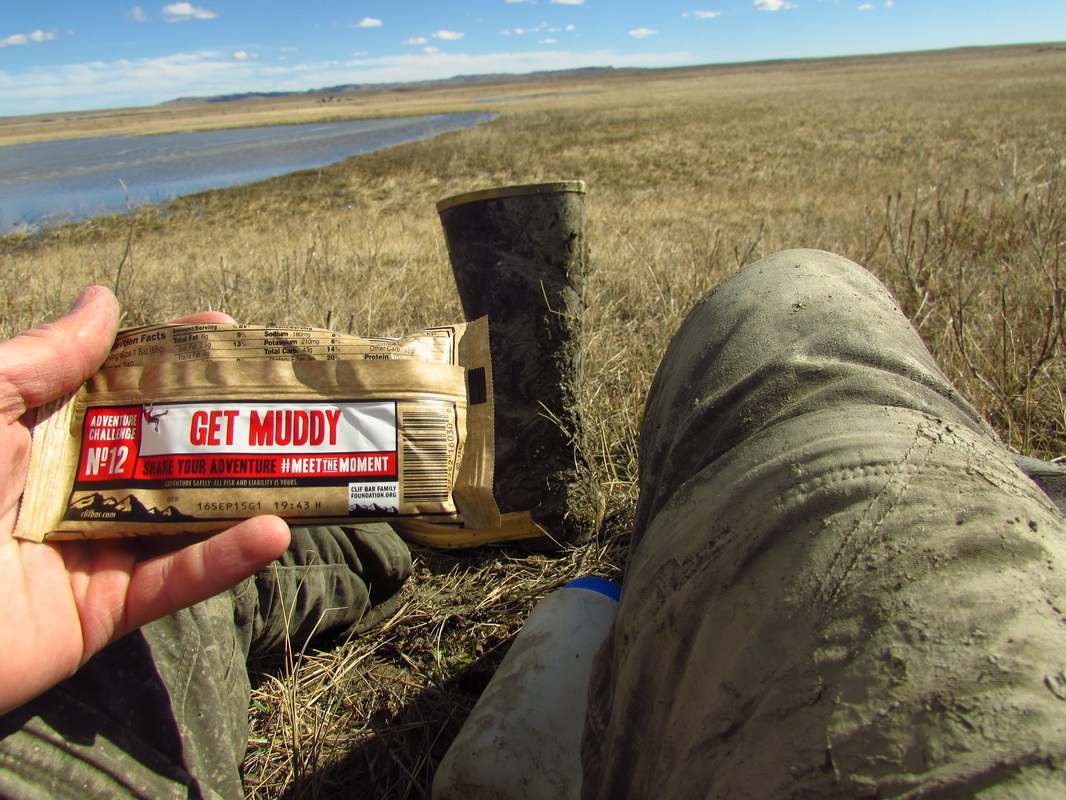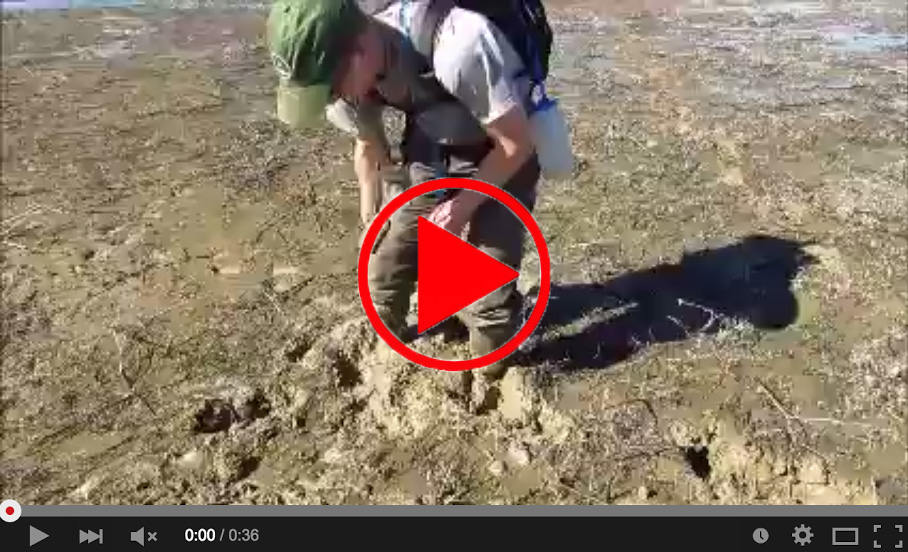Landmark Crew Member
There is more to walking through mud than just moving each leg in turn. During my time with Landmark, I’ve learned that technique can be the difference between voyaging through the mud at a swift 1.2 mph, and struggling in one spot for 15 minutes. Becoming stuck can drain valuable energy, and if freedom isn’t regained, you might run the risk of attracting a hungry, circling turkey vulture.
I hereby propose the compilation of an academically thorough guide to mud maneuvering. I will begin the effort by sharing the knowledge a coworker and I have compiled here. However, because I don’t possess every technique related to mud walking, I plan to consult experts from around the world for future volumes.
It’s best to avoid becoming stuck. Maintaining your liberty may require one or more of the following techniques.
The Pointed-Foot Technique
While trudging through an increasingly mucky area, I could feel the ground playfully tugging at my feet with each step. Eventually, the mud got greedy and did not let go. With my literal next step denied, I was pulled back to the gluttonous ground, which then took my second foot.
“Walk on the balls of your feet, and you don’t stick as much!” Elaine called over to me. I tried walking in place using this technique and was promptly liberated.
 Elaine shows off her pointed-foot technique.
Elaine shows off her pointed-foot technique.
The Don’t-Slow-Down Method
While venturing further into that same mud field, I found that if I stopped or slowed down, I sank. Sparked by this discovery, I came up with the Don’t-Slow-Down Method. It was simple and worked, so
I didn’t question it.
This method didn’t seem as important for Elaine. If she stopped, she would sink some, but not to the point of becoming stuck. Further research is necessary to understand this phenomenon.
Techniques for Becoming Unstuck
Proper technique can be energetically taxing and may result in a misstep. In an unfortunate circumstance, this can mean getting stuck. Here are some remedies.
The Lift-Your-Heel Strategy
While sunk in mud, it may be possible to lift your heel enough to break the suction between the bottom of your boot and the mud. This will make it much easier to remove the rest of your foot. Science.
The Toe-Pull Procedure
When your foot becomes too stuck for the Lift-Your-Heel Strategy, you may need to employ the Toe-Pull Procedure. This involves reaching your hand down into the mud, finding the toe of your boot, and pulling your toe high enough to allow air under your foot. This will break the seal and allow you to pull the rest of your foot out.
The Yank-Your-Foot System
This method of repeatedly yanking your foot until it comes out of the mud is possible, but unwise in deep mud unless looking for creative ways to burn calories. It can consume large amounts of energy and cause your other foot to become more stuck.
Below is an expert demonstration of this system.


